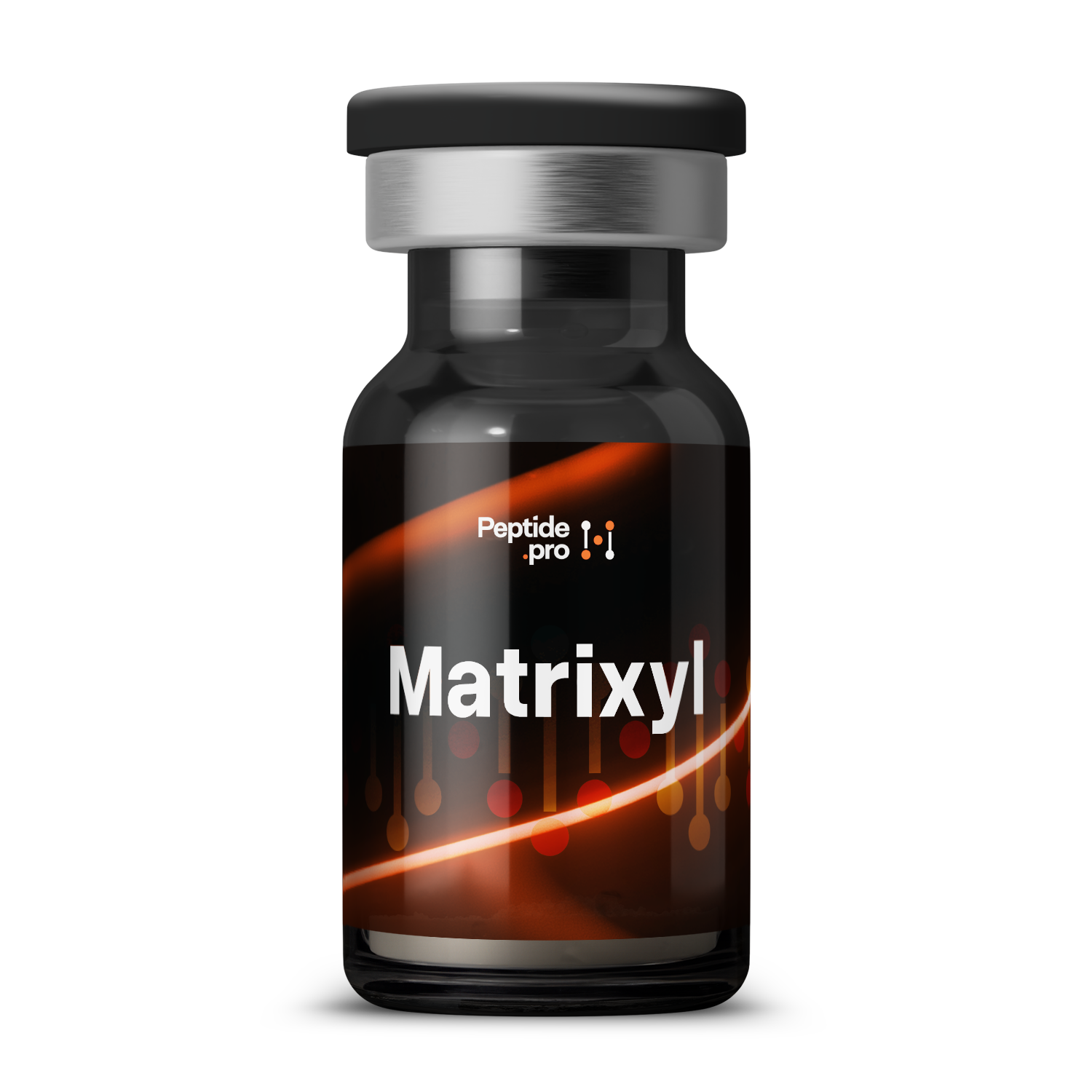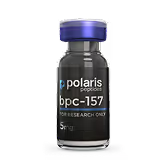Matrixyl
Matrixyl is a five–amino-acid peptide attached to a fatty-acid chain that helps deliver the signal deep into the skin’s layers. It tells skin cells (fibroblasts) to boost collagen and elastin production, strengthening the skin’s support structure. With regular topical use, it reduces wrinkle depth, improves firmness, and enhances overall skin texture.
Compound Overview
About the product
The peptide sequence is Lys-Thr-Thr-Lys-Ser attached at the N-terminus to a palmitic acid moiety (a 16-carbon fatty-acid) to improve skin penetration. The palmitoyl group increases lipid solubility and stabilizes the peptide in formulations. It contains only natural L-amino acids plus the synthetic lipid modification. Cosmetic-grade Matrixyl is purified by HPLC to ≥95 % purity and verified by mass spectrometry.
Matrixyl binds to receptors on dermal fibroblasts (skin cells that produce collagen), activating signaling pathways for extracellular-matrix production. It upregulates genes involved in collagen I, elastin, and fibronectin synthesis. The palmitoyl chain facilitates delivery into the epidermis and dermis. These combined effects support skin firmness and elasticity in human studies.
Matrixyl benefits are primarily associated with reducing wrinkle depth and improving skin texture. In human cosmetic trials, topical Matrixyl formulations decreased wrinkle appearance and increased skin smoothness after four to eight weeks of daily use. Participants also showed modest improvements in skin hydration and elasticity measurements. It is commonly incorporated into serums and creams as a non-invasive anti-aging ingredient.
Reported adverse events are minimal and limited to occasional mild skin irritation or redness at application sites. No systemic absorption or hormonal effects have been documented. Safety in pregnancy, lactation, and on compromised skin has not been formally evaluated. A patch test is recommended for individuals with sensitive skin.
Matrixyl is synthesized by Fmoc solid-phase peptide synthesis on a resin support, sequentially coupling the five amino acids. After cleavage, the peptide is lipidated with palmitic acid and purified by preparative HPLC to research-grade purity. Mass spectrometry and analytical HPLC confirm sequence integrity and lipid conjugation. Production follows cosmetic-industry good manufacturing practices.
Matrixyl is approved as a cosmetic ingredient in the U.S., EU, and many other regions and may be included in over-the-counter skin-care products. It is not regulated as a pharmaceutical and may not carry therapeutic claims. Products must list it under its INCI name (“Palmitoyl Pentapeptide-4”). No prescription formulations exist.
Topical formulations typically contain 2–5 % Matrixyl in serums or creams. Recommended application is once or twice daily to clean, dry skin, often under sunscreen for daytime use. No formal dosing guidelines exist beyond manufacturer instructions. Consistent use for at least four weeks is advised to assess visible effects.
- Do apply to clean, dry skin and allow full absorption before other products.
- Do use sunscreen during daytime to protect rejuvenated skin.
- Don’t apply to broken or inflamed skin without medical advice.
- Don’t expect immediate results, allow several weeks for changes.
- Q: How soon will I see results?
- A: Visible improvements in wrinkle depth and texture are often reported after four to eight weeks.
- Q: Can Matrixyl replace Botox?
- A: No; its effects are milder and develop more slowly compared with injectable neuromodulators.
- Q: Is it suitable for sensitive skin?
- A: Generally yes, but a patch test is recommended to check for irritation.
For research use only. Not approved for medical use.


